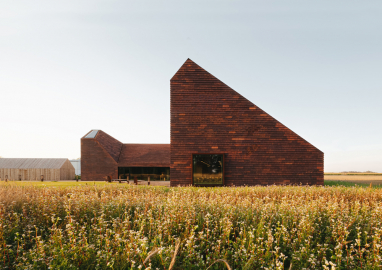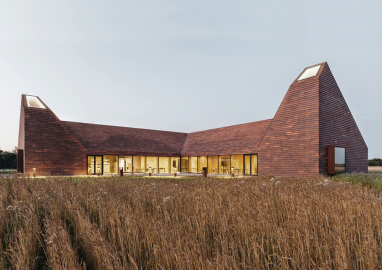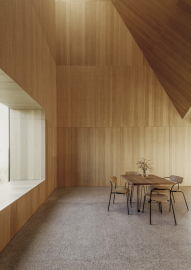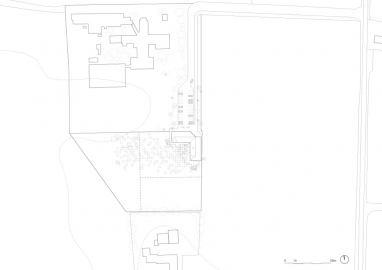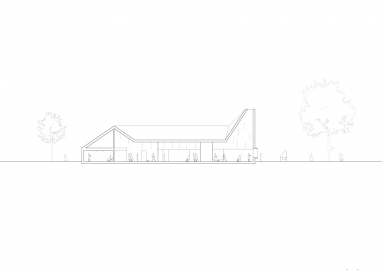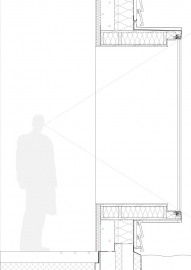House of Grain
The House of Grain is the realization of a center for the dissemination of food and farming culture. Located on the land of an existing farm and bakery, the new inspiration centre offers visitors, locals and employees alike a facility for activity-based learning centered around the importance of grain both to Jutland and to human civilization.
The Jutland region, with its diversity of landscapes and long history, is in many ways the most continental region in Denmark. Hjørring has some of the oldest traces of settlements nationally and an established cultural landscape.
The House of Grain is organized around a simple and flexible plan, which allows for a wide variety of activities and functions to take place. The architectural form is derived from research into the region’s rich landscape, folk culture and agricultural heritage – the center being defined by its two brick clad light wells, which reinterpret baker’s kilns. The interior is planned to open-up to the vast expanse of wheat fields to the west – framing views outward and opening to the terrace. The public spaces are centered around a large bread oven while teaching and exhibition spaces are demarked by the natural light and increased volume of the skylights.
The building shape has a dual function, as it is designed to open up towards the wast landscape in the west, and at the same time be a wind and sound barrier from the road in the east. This has resulted in the volume being shaped like a L. The outdoor spaces consists of experimental crops, making the outdoors part of the buildings activities while being shielded from the wind.
The processing of natural light as a special architectonical quality has been introduced through the nuanced use of continuous light, panoramic windows and two distinctive skylights. The building shape clearly marks the skylights, creating well-articulated atmospheres in different parts of the building.
The building volume and light-wells caused some acoustic challenges, and a lot of time was spent on designing the right solution without compromising the architectonical shape or choice of material. The architects designed an acoustic pattern of dots, dense at the top of the walls and a gradually dissolving pattern towards the floor. This creates the effect of falling grain and has become part of the architectonical expression.
The use of a robust and simple material pallet gives the House of Grain an architectural clarity which puts form, light and relation to context in focus. The house is clad with brick walls and roof, only broken by the warm interior glow. The red tiles differ in color and creates a play that interacts with the yellow colored grain, surrounding the building.
The interior walls and ceilings are clad in oak with list-free transitions, and the floor is of durable sanded concrete with aggregate of local stone. These are traditional danish materials that takes inspiration from clay ovens. The use of local materials in regard to sustainability as well as representing local culture was an important part of the project.
The construction consists of concrete, steel and glued laminated timber. The timber construction creates a grid that organizes the plan on one level with a clear and distinct floor plan, creating flexibility between the various activities in the center. The solution provides an efficient and manageable room structure, where areas over time can be merged of divided if needed.

